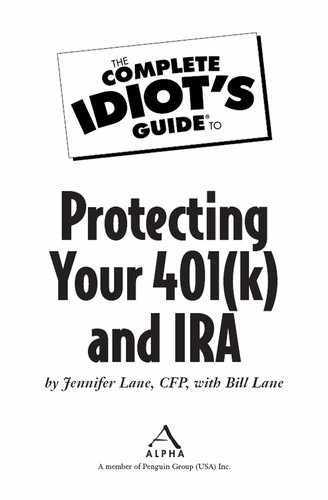Keep It Growing When You Change Jobs
Very few people stay in the same job for their entire work career anymore. This is actually part of the reason why plans like 401(k) and 403(b) are more popular than less-portable pension plans. When you change jobs, you’ll almost always have the option of leaving your retirement plan in the previous employer’s plan. If you like the investments there, you may decide that’s a good idea—and certainly more convenient than having to deal with moving the assets to an IRA or your new employer’s plan. But having multiple plans to keep track of is not the best option in the long run. Consolidating your accounts into your IRA or your new employer’s plan will make it easier to manage your nest egg. As we’ve already told you, be careful moving your retirement plan; the penalties for making a mistake are pretty steep.
You can use a 60-day rollover or a direct trustee-to-trustee transfer to move money between any two retirement plans. This includes moving from one IRA to another or consolidating several IRAs into one account, as well as moving money from an employer plan to an IRA. If you move money from a regular IRA to a Roth IRA, you’ll owe taxes on the money you transfer because Roth deposits must always be after-tax money.
Contact the current trustee to initiate a transfer between your accounts. If you’re changing jobs, you’ll be working with the human resources departments from both your old and new employer to make the transfer. Except in the case of some 403(b) plans, which can remain unchanged as you move from one employer to the next, your old employer will give you a packet that contains information about your retirement plan and your options when you leave the job. They’ll let you know whether you can leave your account with them, and they’ll remind you of the tax consequences of taking a distribution from your retirement account without transferring it to a new retirement account. (It may seem like information overload, but these disclosures are all required by the law.)
If you decide to move your old 401(k) to a new account, the old employer will need to know whom to send the money to. That’s where human resources at your new job comes in. They’ll have the information the old employer will need either to electronically transfer your money or to make out a check for the transfer. If you want to move to an IRA, the trustee or the investment company you’re going to use will have that information.
If you’re over age 70½ and you change jobs, your employer might take the required minimum distribution (RMD) from the account balance before it cuts you the check for a 60-day rollover or makes a direct transfer to the new custodian. This is helpful if you are retiring, but it is not helpful if you’re going to continue working and are transferring the money to your new employer’s plan. Talk to both companies’ human resources departments in this case—from both the old and new employer—to coordinate the transfer without the RMD, so you can keep your whole balance growing.
60-Day Rollovers in Detail
Under a 60-day rollover, the current plan trustee will give you a check in your name for the amount you want to withdraw. Ask the trustee not to withhold taxes from the withdrawal. If he does, you’ll need to make up that amount when you re-deposit the 60-day rollover withdrawal back into your IRA or 401(k) account. A 60-day rollover might be the fastest way to transfer money between accounts because you’re not waiting for two bureaucratic financial institutions to make the transfer between them, but it’s also the riskier way. If you miss the 60-day deadline or are not able to deposit the amount that was withheld for taxes, you’ll owe tax and a penalty (if you’re under age 59½) on the amount not deposited.

Rainy Days
You can do only one 60-day rollover of the same funds per year. Once you’ve moved an account, you can move it again through a direct trustee-to-trustee transfer but not another rollover. This prevents individuals from continuously withdrawing and using the same IRA money in multiple 60-day stints.
Remember: Direct Transfers Are Best
The safest way to move money between retirement accounts is through a direct trustee-to-trustee transfer. The transfer may happen electronically between both trustees, or the trustee you’re withdrawing from may cut a check made out to the second trustee on your behalf, for example, “Pay to the order of XYZ Mutual Fund company for the benefit of Jane Smith.” Even though you get the job of receiving the check in the mail and forwarding it to the new trustee, because the check isn’t in your name, taxes aren’t withheld. The check will be for the full amount of the transfer.
..................Content has been hidden....................
You can't read the all page of ebook, please click here login for view all page.
